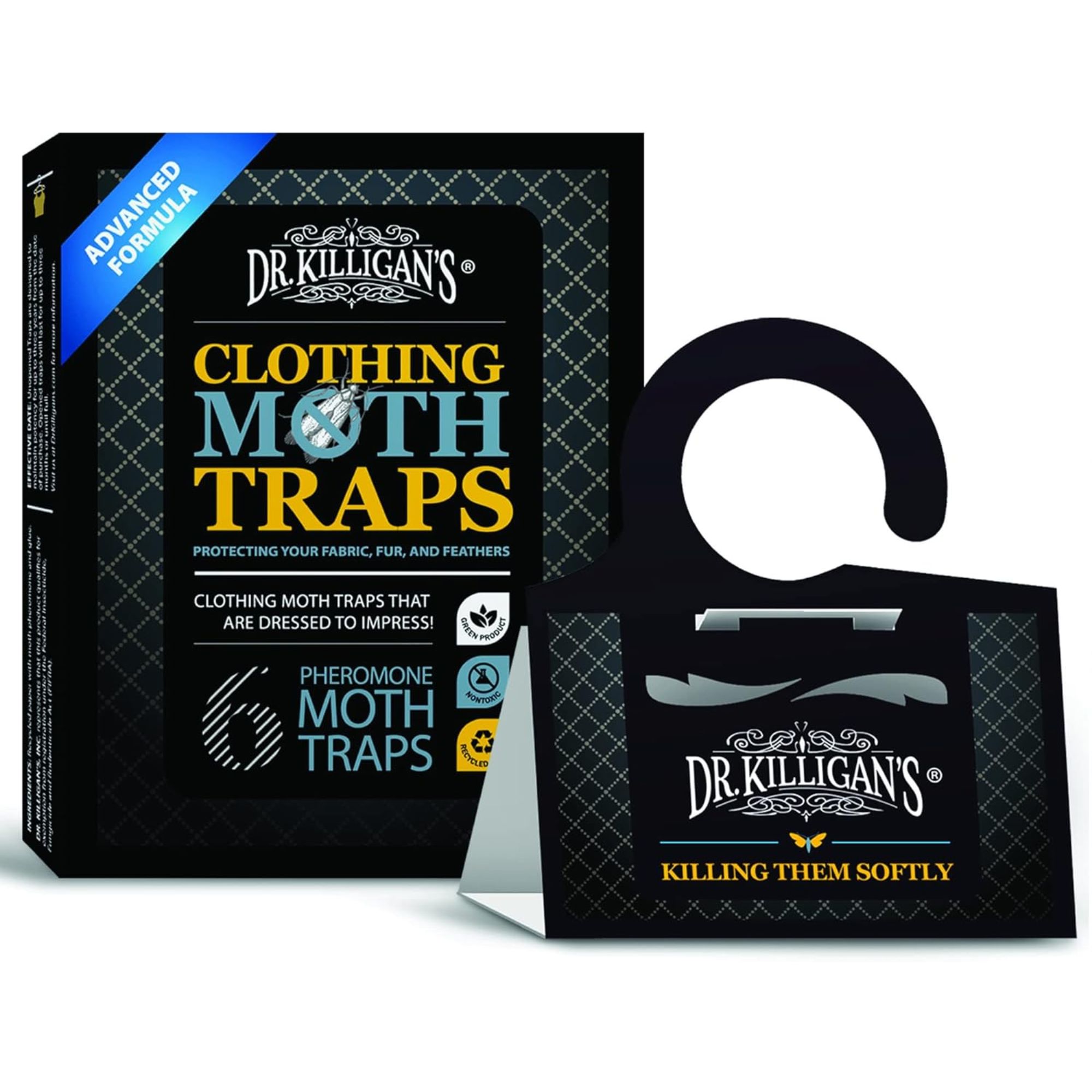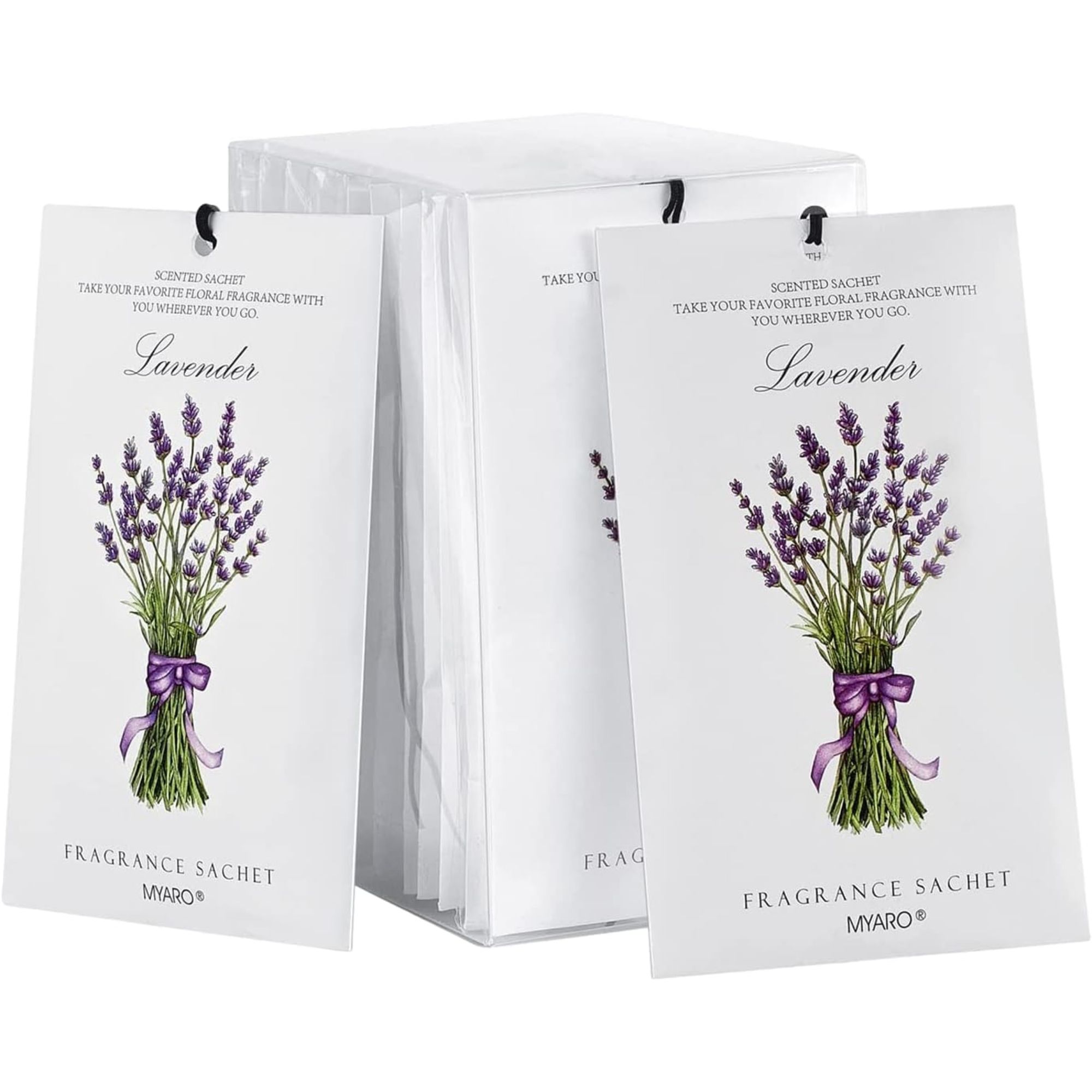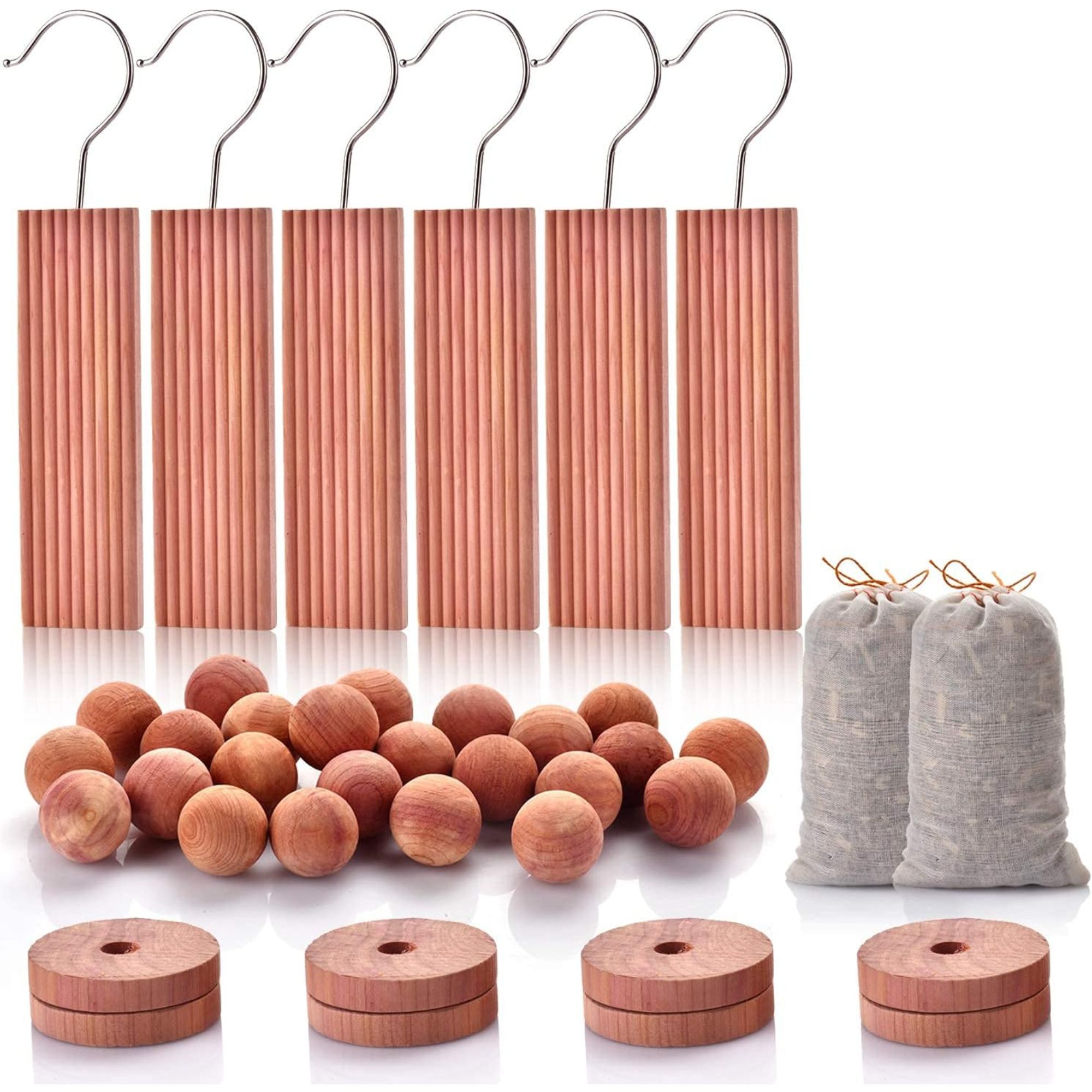Which insects cause holes in clothes? Plus, the tricks to stop them
If you've just pulled a clean sweater out of your closet to discover unexplained holes in it, it's likely insects that have caused it. These are the likely culprits and how to combat them
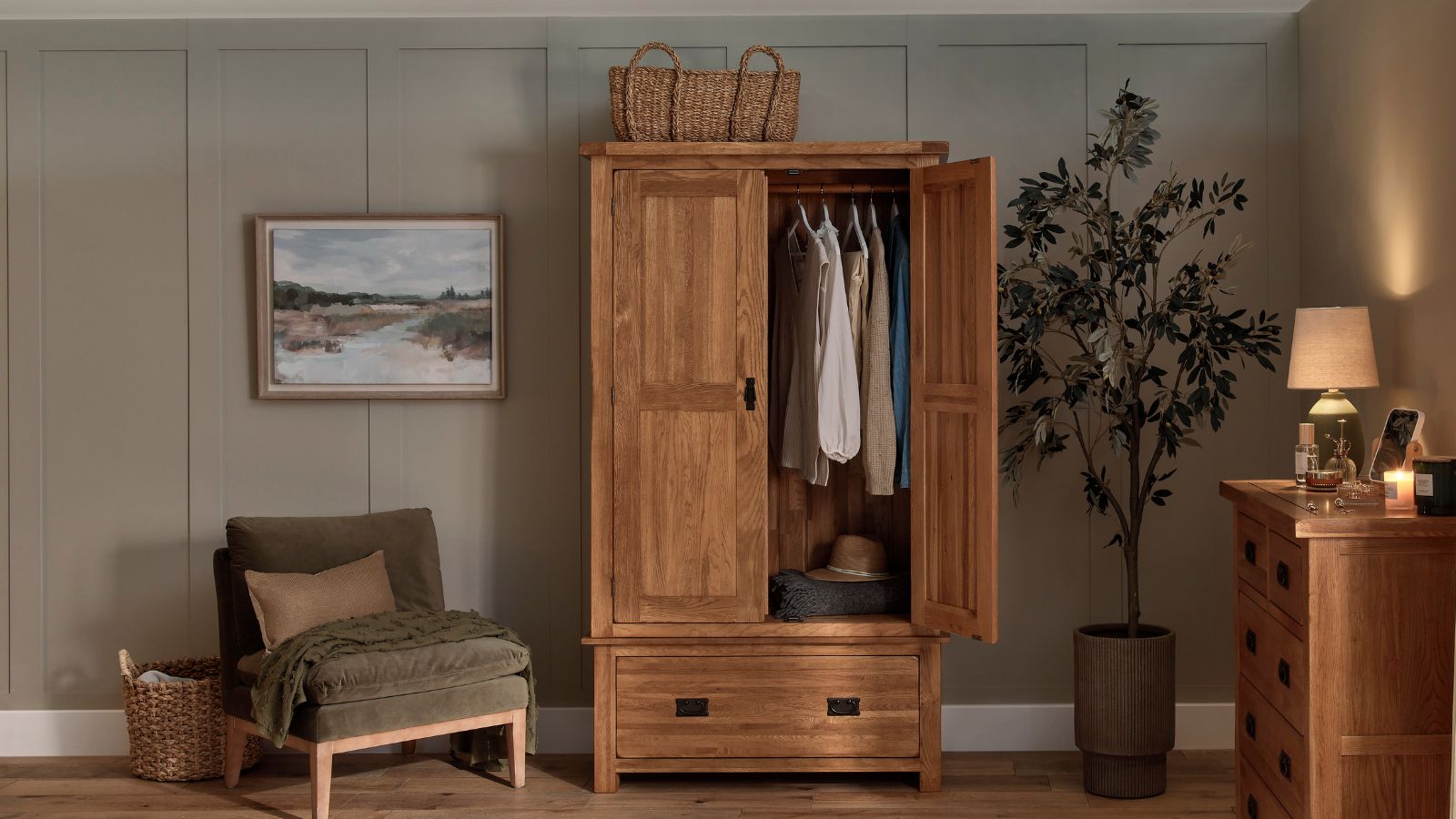

It's infuriating when you carefully handwash and flat-dry your favorite top, only to pull it from the closet to discover that a new hole has appeared. If there's no obvious explanation – careless machine washing or wire hanger damage – it's likely that insects have caused holes in your clothes.
Before you start searching for information on how to get rid of moths, it's worth knowing that moths aren't the only culprits. Other insects, such as harmless-looking silverfish and everyone's least favorite, the cockroach, can also cause holes in clothes.
To protect your clothes, determine whether there are moth holes in your clothing or if the damage is caused by something else. This is important because different types of insects require different treatment methods. We looked at the most likely candidates and spoke to pest experts to find out how to ensure your closet is insect-free and your clothes as unappetizing as possible.
Why insects make holes in your clothes
Insects, usually larvae, that munch on your wardrobe are not just attracted to the keratin found in natural materials such as silk, wool, and leather – annoyingly, likely making up your most expensive pieces – they will also happily eat dead skin cells. This makes your closet the perfect place to feast. These are what pest experts say to look out for and what to do to get rid of them.
Moths
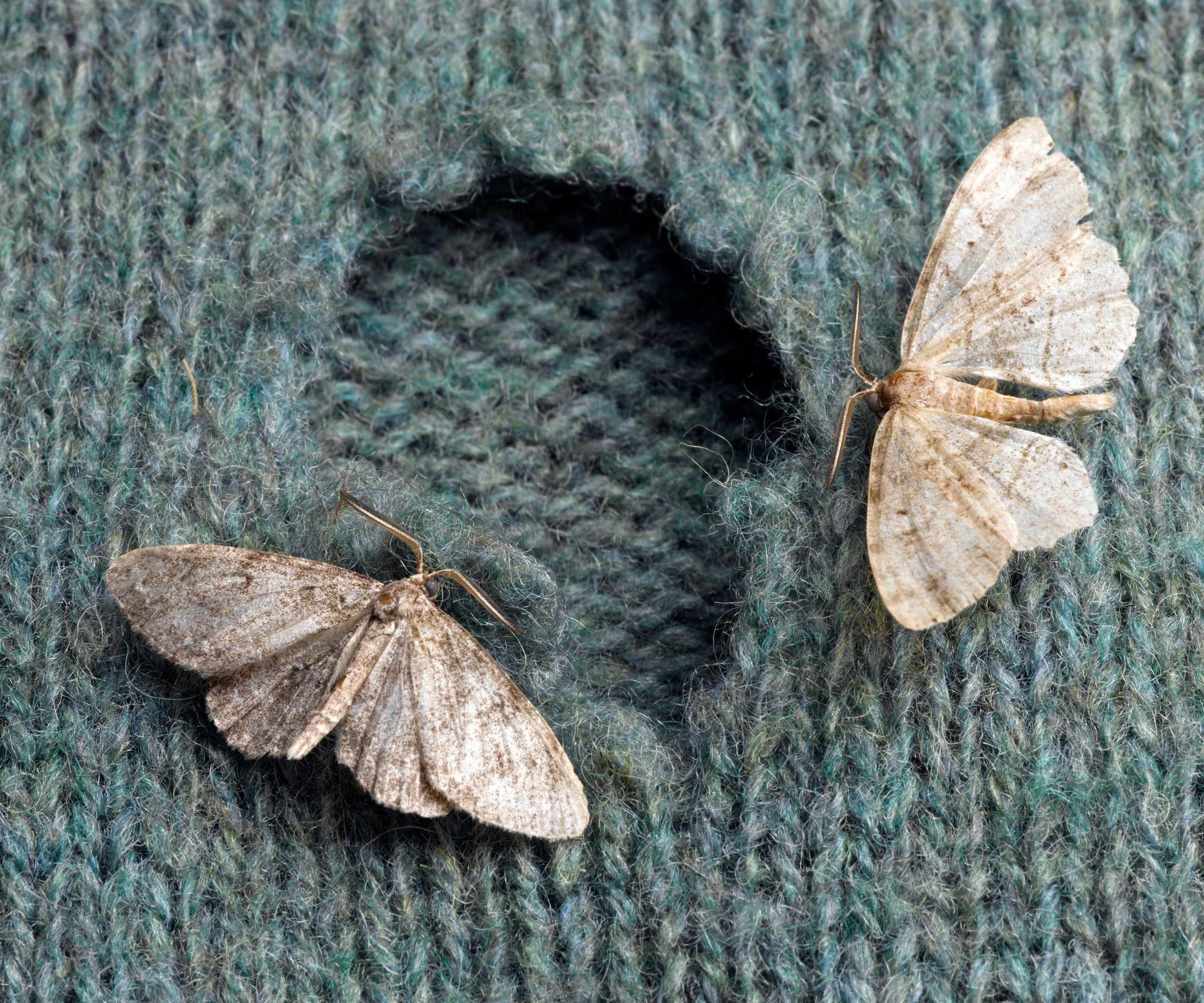
'Moths are often the main cause of holes in natural fabric clothing, such as silk, wool, or cashmere,' says Iliyan Andreev, a pest control specialist at Fantastic Services.
'These bugs can be recognized by the brown or beige color of their bodies, and they also lack the broad wings typical of other moth varieties. They're small in size, with a length of about 6 mm. When they are in their young stage, their bodies have a brown or tan coloring and resemble miniature worms. Generally, these larval worms have dark brown heads and lighter, tan, or yellow bodies.'
If the first sign of moths in your closet is when winged creatures flutter about as you open the door, it's likely this insect has already put holes in your clothes since it's the clothes moth larvae that will have done the snacking.
Design expertise in your inbox – from inspiring decorating ideas and beautiful celebrity homes to practical gardening advice and shopping round-ups.
Other indicators of clothes moths, including Case-Bearing Clothes Moths and other species, are:
- Cylindrical casings made by moth larvae.
- Active larvae of moths.
- Deceased adult moths or larvae.
- Small or large holes in clothing.
- Sticky residues on clothes.
There are many ways to get rid of them: you can get rid of moths with vinegar, create a homemade moth repellent, store clothes with DIY lavender sachets, use bay leaves to deter closet pests, or simply buy a ready-made moth trap. Using cedar blocks for clothes storage is another highly rated way to deter moths.
Preventative measures include cleaning your clothes closet regularly and vacuuming carpets, drapes, and upholstered furniture, which can harbor eggs and larvae.
Indeed, preventing moths in your closet in the first place is the best and only way to avoid damage to clothes since, if you don't spot the moth that lays the eggs that produce the larvae, it's only a matter of time before those larvae become moths and lay still more eggs, inflicting still more damage.
Silverfish and firebrats
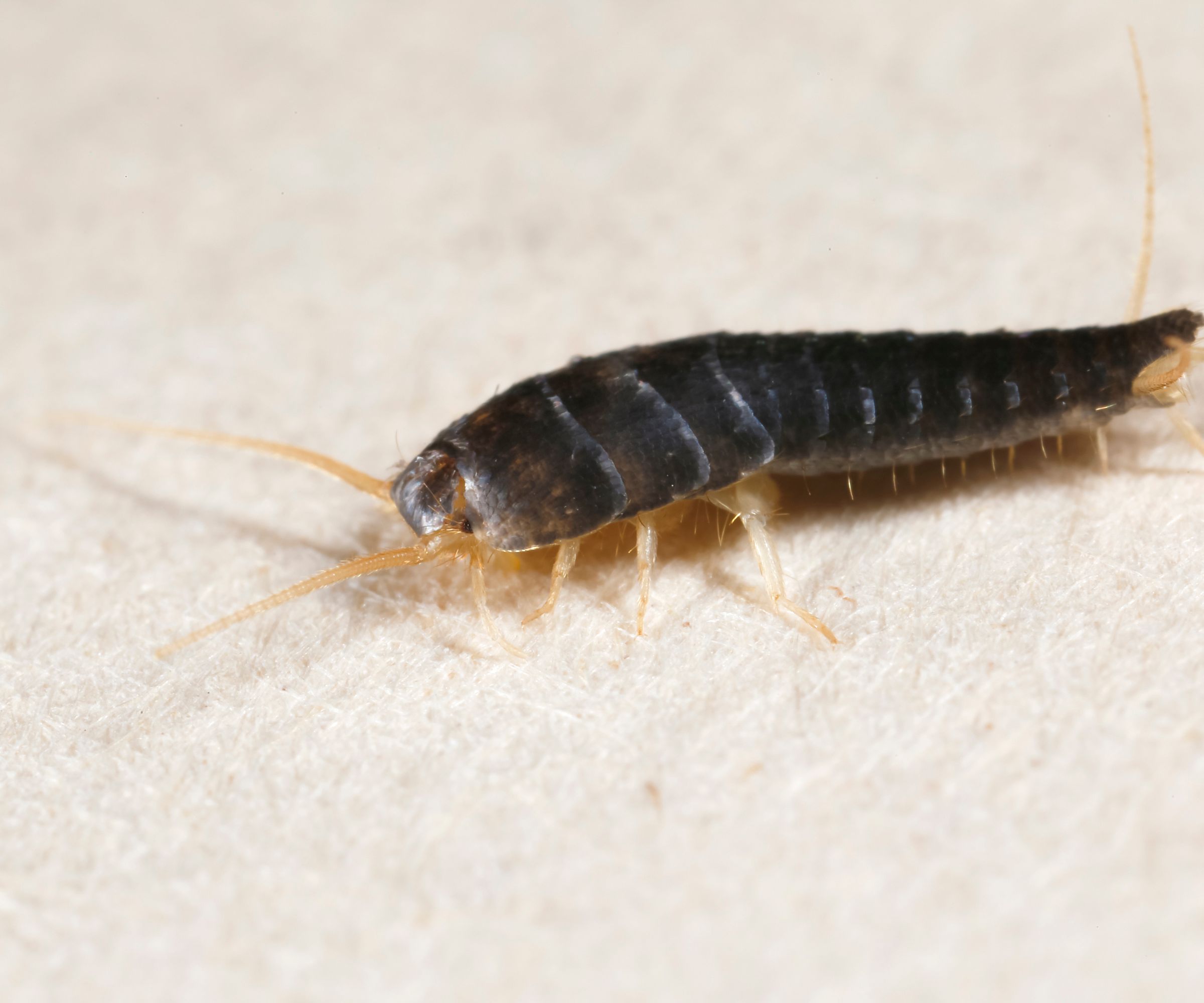
Silverfish and Firebrats are closely related and can both damage clothing by creating holes in it. Though they may look inoffensive, it is worth getting rid of silverfish and firebrats as you see them.
In case you're unacquainted, both are six-legged, long-antennaed creatures around 0.5 inches long. Silverfish tend to be silver-gray; firebrats look similar but are gray-brown. These insects have long and slender bodies with curved antennae at the back, as well as a hard and shiny outer covering.
Both like to eat starches, which is why, as well as being attracted to areas where you store grains and vegetables, they can also be found eating everything from books to fabrics.
As with other insects that make holes in clothes, they are attracted to dirty items, so ensuring you only put clean clothes back in your closet can help limit its attractiveness as a hiding place.
If you have an infestation, baits, at Amazon and silverfish sprays at Walmart will all help get rid of them, as will sprinkling a small amount of Borax – or diatomaceous earth – in the closet.
Additionally, investing in the best dehumidifiers helps to maintain the best humidity levels year-round, creating an environment that is less than favorable for silverfish and fiber boats.
Cockroaches
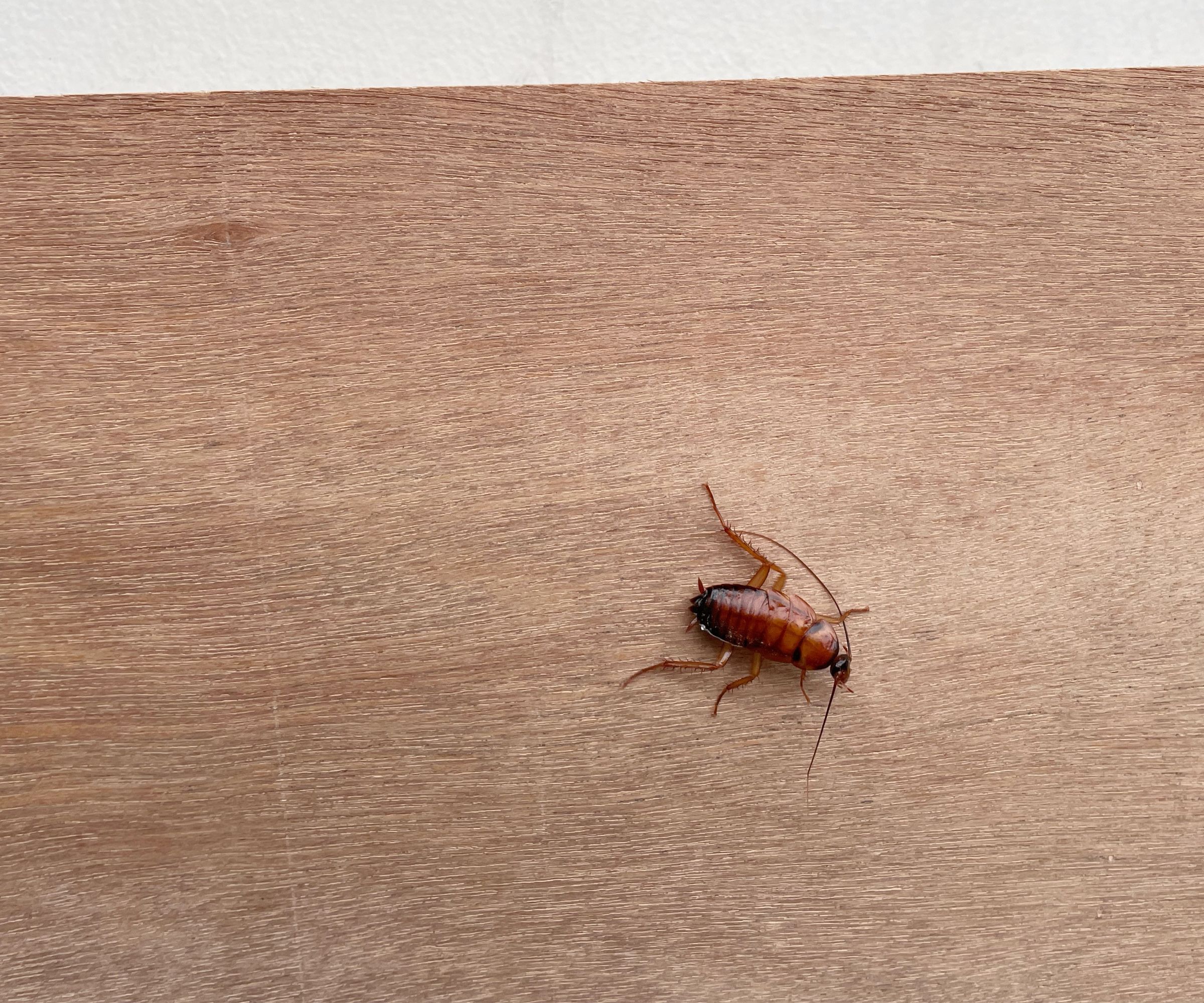
Getting rid of roaches isn't a 'whenever' project. Unlike with less offensive silverfish, no one wants to share their space with a cockroach. And they don't only enjoy eating through clothes, usually those with food spills on them; they can carry nasty diseases, and they smell bad, too.
If you want a natural solution, you can combine 15 drops of peppermint oil, available at Amazon, with 10 ounces of water and spray the mix around infested areas.
For a much more severe infestation, a no-messing solution is Amazon's top buy is Advion Cockroach Bait, on which a single cockroach can feed and then transfer to as many as 40 other cockroaches.
Crickets
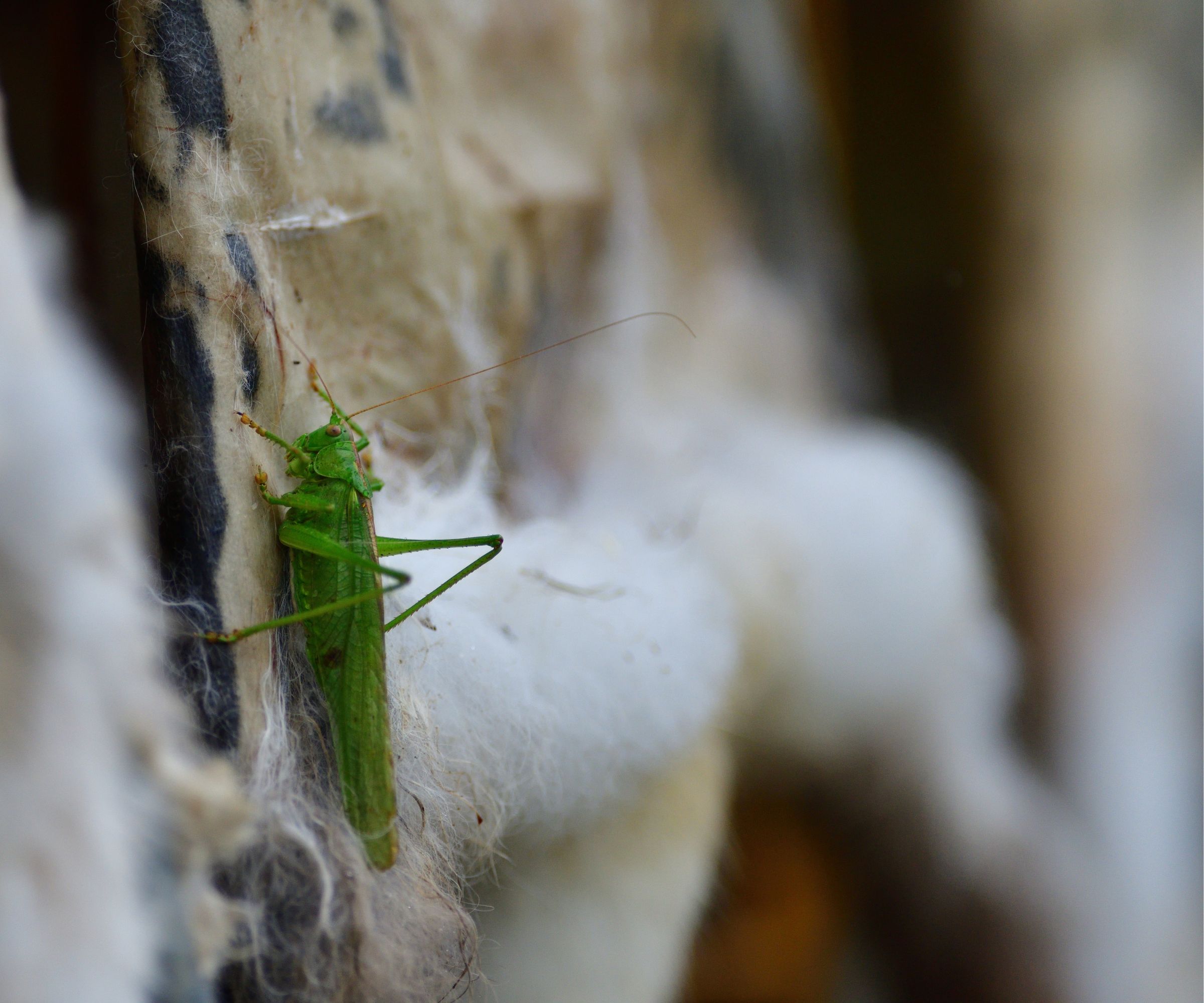
House crickets may feed on your cotton and wool fabrics, especially during summer. These insects are attracted to warm, damp, and humid environments. Summertime creates ideal conditions for them to fester through your clothing, but don’t be surprised if you notice any holes in your fabrics outside of this season, as they may still be around during other times of the year.
As well as being a noisy, unwelcome addition to a closet, they can stain your clothing with their feces, so it is worth keeping crickets out of your house at all costs.
A simple way to do so is to keep doors and windows shut; using an Ultrasonic Pest Repellent Control, like this one from Amazon is a pet-safe way to discourage both insects and rodents from entering your home. It can simply be plugged in and left.
Carpet beetles
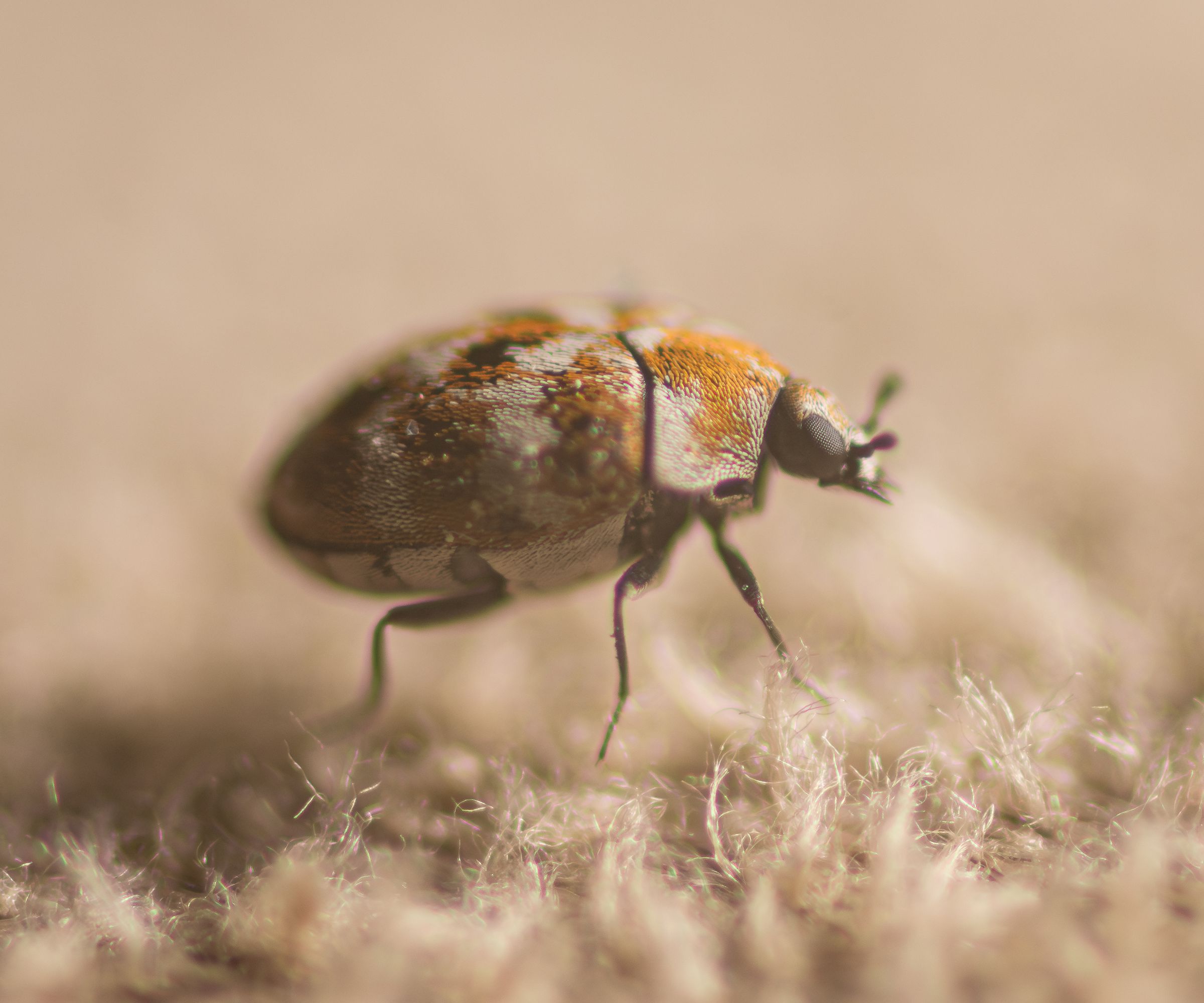
'Like moths, Carpet Beetles don't consume fabric during their adult phase. Instead, they rely on natural fiber fabrics as nourishment for their larvae,' explains Iliyan Andreev. 'These pests have a preference for carpet fabrics and typically inhabit poorly lit spaces like closets, baseboards, and air ducts, between floorboards, in carpet, and even in the clothing itself, that will eat through the fabric of your clothes. They're also drawn to damp environments. Because of that, if your closets are damp and your clothes have holes, you may get an infestation.'
They are mostly drawn to damp conditions and materials such as wool, fur, and feathers, but will be fairly indiscriminate as they move about, so while you can be vigilant about housekeeping in your closet and improve its ventilation, you should still take precautions.
Sprinkle boric acid in difficult-to-reach affected areas (this Duda Energy powder boric acid from Walmart is a good buy).
Amber Roy, a senior fashion designer at CLIFTON also recommends: 'Store away particularly precious items and seasonal items in lidded, plastic storage containers; containers with drawers that stack, like these from Walmart can be a useful addition to a closet.
'You can also employ pheromone traps to monitor and control their populations.'
FAQs
How can I avoid holes in my clothes?
When you are doing laundry, it's important to empty pockets of sharp objects such as hair pins and keys. Obviously, these can damage your appliance but they are often the most likely cause of holes in clothes.
Beyond that, look for signs of an insect infestation, noting that adult insects are usually the easiest to spot. Good clothes and closet hygiene will help you see larvae casings but don't forget that the eggs are often laid by adults in cracks and crevices where they're not easy to spot, so checking regularly and using deterrents, such as cedar blocks on your hangers is a wise move, as is storing clothes in lidded boxes.
Putting out-of-season clothes in vacuum-sealed bags, like these best-sellers from Amazon, is a space-saving, hole-avoiding solution, as well. Be sure to launder clothes thoroughly before you put them away to ensure you're not storing clothes with larvae hidden amongst them.
Remember, too, that if you have an infestation of insects that are putting holes in clothes, they can quickly move on to other fabrics, such as upholstery and bedding, and even to books.
What is the best way to trap insects that make holes in clothes?
Ideally, you need to get to insects before they become adults since it's often the larvae that eat through the clothing. However, using insect traps, such as those mentioned above, to kill adults who might go on to reproduce, and keeping your closet clean and ventilated will help reduce the risk.
What clothes do insects like to eat?
Some insects are drawn to natural materials, such as wool or silk, leather and even feathers. Others are drawn to our sweat and skin cells, which means worn clothes are more likely to be a problem. Others still are drawn to food and drink spills on clothes, damaging the fabric while feasting on the debris. Keeping precious natural fabrics in lidded boxes and ensuring the closet is well ventilated and clean will keep these pieces safer; ensuring only clean clothes go back in your closet will make your clothes less attractive to those on the hunt for a tasty morsel.
What should I do if I find insect larvae in clothing?
If you can wash your clothes on a hot cycle, do it, ensuring afterwards that the pockets are free of any hidden, surviving creatures. Another way to treat clothes is to vacuum and steam clean them. You can even freeze smaller items that can't take a hot wash or steam clean. In all cases, though, you need to then ensure the whole closet and its contents is treated, since it's unlikely the larvae is limited to one piece of clothing.
For additional protection, consider using natural deterrents like lavender, peppermint, or cedar essential oils and sachets in storage areas, which offer a safe alternative to chemical mothballs. These methods not only repel insects but also impart a pleasant aroma to the stored garments.
Implementing these strategies effectively can minimize the need for costly repairs or replacements, preserving the quality and longevity of clothing over time.

Lola Houlton is a news writer for Homes & Gardens. She has been writing content for Future PLC for the past six years, in particular Homes & Gardens, Real Homes and GardeningEtc. She writes on a broad range of subjects, including practical household advice, recipe articles, and product reviews, working closely with experts in their fields to cover everything from heating to home organization through to house plants. Lola is a graduate, who completed her degree in Psychology at the University of Sussex. She has also spent some time working at the BBC.
